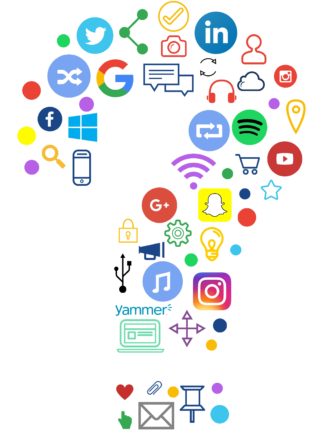
I recently ran a workshop for one of EK’s clients that was designed to discover, document, and then model how their internal social network (Yammer in this case) was running in their organization. The idea was to figure out if the company could use Yammer less organically and more deliberately for communication and collaboration.
The company is relatively new to social networks. They turned Yammer on about 7 months ago and initially just let it run, watching how employees used it without any real institutional encouragement. The result was about what you would expect: Pockets of “early adopters” established groups and began using the tool to connect with relatively small networks of employees. Its adoption was far from widespread and its impact on the organization was small. It wasn’t central to how the company worked or exchanged information.
About 3 months ago, the communications department took matters in hand and began to look seriously at how it could use Yammer as a more official – and more managed – internal communications and collaboration tool. They recognized that Yammer would continue as an organic collaboration tool among self-forming groups, but they wanted to do more. With EK’s help, the communications department took a step-by-step approach to institutionalizing and managing Yammer in the organization.
First, we provided an official channel for the CEO to post video and text messages to employees. Channeling CEO messaging and videos through Yammer provided an official endorsement of the tool and a ready and willing audience, namely all company employees.
Second, we embedded Yammer into their redesigned portal. We put each employee’s “My Feed” on the home page to balance traditional corporate communications content with more dynamic and personalized social posts.
Next, we developed an avatar in Yammer for employee communications. Posts in Yammer from “employee communications” rather than from a named individual added an official, institutional dimension to Yammer posts. In addition to the My Feed on portal home page, we embedded a Yammer user feed that displayed only posts from the employee communications avatar. This provided an announcement channel for the company that displayed both on the portal home page and on employees’ mobile devices via the Yammer app.
Finally, we ran the workshop to understand how all of these uses of Yammer – both organically created groups and more strategic uses – could come together in a unified way. During the workshop we charted Yammer along three dimensions:
- The various types of authors that post to Yammer (e.g. the CEO, company leadership, corporate communications, regional leadership, subject matter experts, project team members).
- The various types of messages posted by specific types of authors (e.g. organization announcements, stories and anecdotes, earnings reports, holiday greetings).
- The specific audiences each message type was directed toward (e.g. all company, project teams, regional groups, individual facilities, affinity groups)
The resulting interaction model gave a holistic view of how Yammer is used in the organization and how it could best be managed. By diagraming the model and communicating it throughout the company, employees now have a better idea of how to use their social network effectively. They know what types of groups to join, where to post various types of messages, and how the Yammer group that they just created fits into the overall collaboration network.
Looking for help with “taming” your social networks and fostering sustainability? EK can help.
